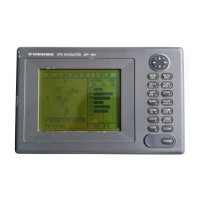10–1
10. INTRODUCTION
TO GPS
10.1 What is GPS?
GPS is an acronym meaning Global Position-
ing System. GPS is a highly precise satellite
navigation system developed by the U.S. De-
partment of Defense.
A constellation of 24 satellites emplaced in
nearly 20,000-kilometer high 12-hour circu-
lar orbits provides highly precise, continuous,
worldwide, all-weather position plus time and
velocity information to GPS receiver-
equipped vehicles, vessels and aircraft.
All GPS satellites transmit at the same fre-
quency of 1575.42 MHz, and each satellite
has a unique signal coding scheme, so that it
can be identified by a GPS receiver.
Figure 10-1 GPS satellite orbital pattern
10.2 How the GPS Receiver
Calculates Position
The basic steps in position fixing are as fol-
lows:
1) GPS satellites continually transmit their
own precise orbital data called ephemeris.
The GPS receiver computes satellites’
position by this data.
2) The GPS receiver measures very accurate
distance to the satellites.
3) The GPS receiver fixes its position by the
intersecting point of three satellite posi-
tions.
d1
d2
d3
Position fix
1 Satellites locations are measured

